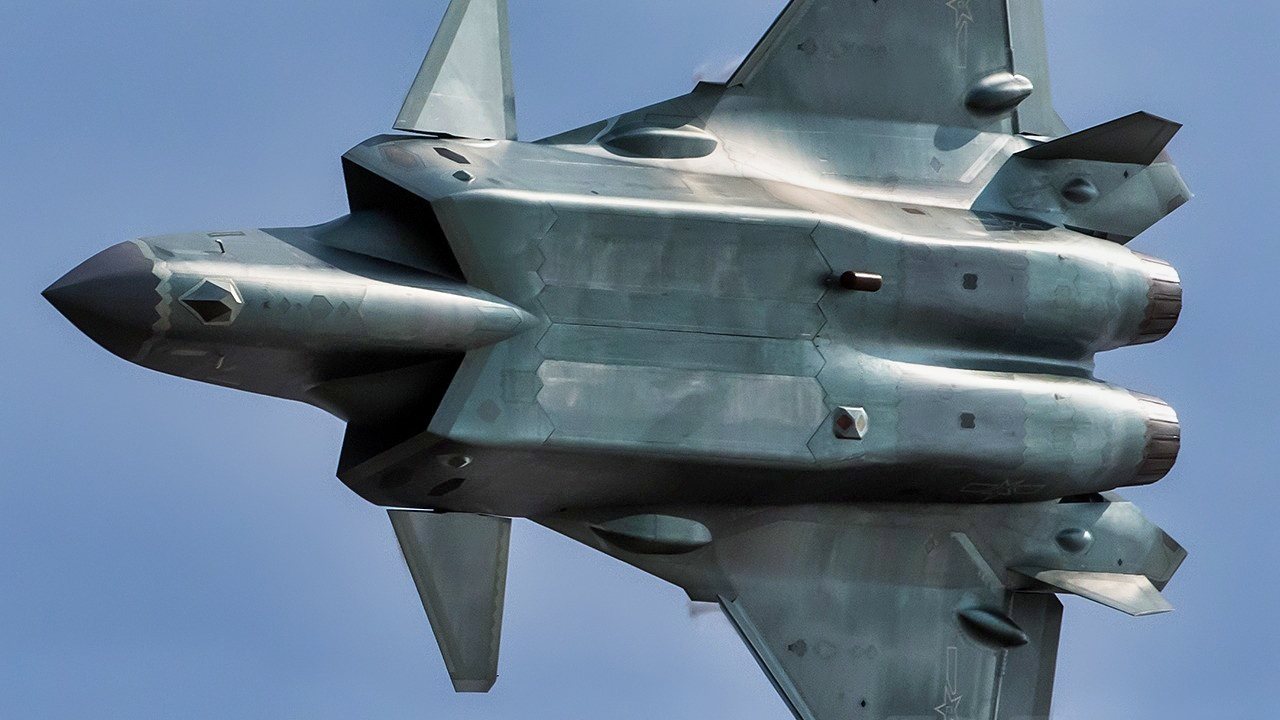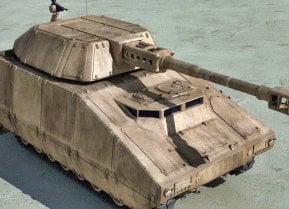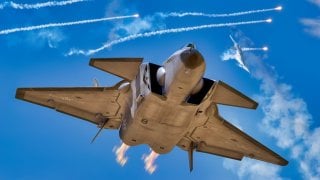Why the U.S. Military Doesn't Sweat China's J-20 Stealth Fighter
A recent report about a senior U.S. military officer who publicly stated that the much-feared, much-vaunted J-20 ain’t all it’s cracked up to be is making waves.
The ever-expanding military might – in terms of size and technological capabilities alike – and accompanying aggressiveness of mainland China is a major source of concern to the United States and its allies in the Pacific Rim. Arguably, the ultimate embodiment of that concern from a technological standpoint is the People’s Liberation Army Air Force (PLAAF) 5th Generation Chengdu J-20 Wēilóng (“Mighty Dragon”) stealth fighter.
But how good is this newish stealth fighter?
A recent report about a senior U.S. military officer who publicly stated that the much-feared, much-vaunted J-20 ain’t all it’s cracked up to be is making waves.
J-20: Basics
This nugget of news comes to us courtesy of Oliver Parken back in September, writing for The Drive (and republished by MSN) in an article titled “China's J-20 Isn't A "Dominating Aircraft," USAF General Says.” In a nutshell:
“General Kenneth S. Wilsbach, the head of Pacific Air Forces [PACAF], has offered new comments regarding China’s growing fleet of J-20 stealth fighters. Compared to the capabilities of the U.S., and those of its allies and partners, the general says that the J-20 does not constitute a ‘dominating aircraft at this point’ — a statement which is broadly in line with insights he made on the type last year … ‘I don’t think that it’s a dominating aircraft at this point, compared to what we have [in terms of stealthy F-22 Raptors and F-35 Lightnings],’ Wilsbach highlighted. ‘They’ve done some good copying … pretty much most of the technology from that airplane [the J-20] was stolen from the U.S.’ … Wilsbach was unequivocal in his conviction that the capabilities of U.S. aircraft, combined with those of allies and partners, could counter any potential threat from J-20s.”
On the one hand, with all due respect to the good General, I would take his remarks with a grain of salt, as overconfidence and complacency can be dangerous to one’s own cause.
On the other hand, as blustery as Gen. Wilsbach’s remarks may come across, a quick perusal of his official USAF bio shows that he’s eminently well-qualified to make such declarations; among other things, he was a Distinguished Graduate of the University of Florida’s AFROTC program, and a command pilot with more than 5,000 hours in multiple warbirds, primarily in the F-15C, F-16C, MC-12, and F-22A, and has flown 71 combat missions in Operations Northern Watch, Southern Watch and Enduring Freedom (OEF).
China's J-20 Head-to-Head vs. F-22 and F-35
A head-to-head comparison of these three stealth fighters is in order here. As previously noted, the ever-savvy Alex Hollings – USMC veteran and editor of the Sandboxx blog – rates the F-22, F-35, and J-20 as the #1, #2, and #3 best stealth fighters in the world (Russia’s Sukhoi Su-57 “Felon” comes in dead last).
The Lockheed Martin F-22 Raptor is the oldest of the bunch, having made her maiden flight back on September 7, 1997. She boasts a max airspeed of Mach 2.25 (1,500 mph), a combat range of 460 nautical miles, and a service ceiling of 65,000 feet. Armament consists of a 20mm M61A2 Vulcan rotary cannon and either: (A) six AIM-120 AMRAAMs (Advanced Medium Range Air-to-Air Missile) AKA “Slammers” for pure air-to-air missions; or (B) two “Slammers,” two AIM-9 “Sidewinder” infrared missiles, and either two 1,000-lb. JDAMs (Joint Direct Attack Munitions) or eight 250-lb. GBU-39 SDBs (Small Diameter Bombs) for air-to-ground missions. The Raptor has one confirmed kill thus far, namely that infamous Chinese spy balloon.
The F-35 Lightning II is also a Lockheed Martin “Skunk Works” product. Making her maiden flight on December 15, 2006, she boasts a top speed of Mach 1.6 (1,200 mph), a combat range of 660 nautical miles, and a service ceiling of 50,000 feet. Armament consists of one 25mm GAU-22/A four-barrel rotary cannon, along with four internal hardpoints and 6 external hardpoints with a total combined ordnance payload capacity of 18,000 pounds; amongst the weapons systems compatible therein are the aforementioned Slammer, Sidewinder, JDAM, and GBU-39, as well as the AGM-88G AARGM-ER air-to-ground missile and the AGM-154 JSOW (Joint Standoff Weapon). The Israeli Air Force has already successfully used the F-35 in combat, against ground targets and aerial targets – Iranian missile sites and UAVs respectively.
Comparatively speaking, the J-20 is the proverbial “new kid on the block,” making its maiden flight on January 11, 2011. Its max airspeed is Mach 2.0 (1,522 mph), with a combat range of 1,100 nautical miles, and a service ceiling of 66,000 feet. Its weapons bays are entirely internal, with a maximum capacity of 24,000 pounds, and includes the PL-10 short-range air-to-air missile (AAM), PL-12 medium-range AAM, and PL-15 long-range AAM. Cannon is conspicuous by its absence from the “Mighty Dragon” arsenal.

Good News and Bad News
The J-20 is slower than the F-22 but faster and higher-flying than the F-35. Unlike the two American stealth warbirds, the J-20 hasn’t been combat-proven.
The biggest weakness of the F-22 is that there aren’t enough of them, thanks to the short-sightedness of then-SECDEF Bob Gates when he prematurely killed the F-22 in 2009 after only 187 were built (out of the 381 originally planned); for a particularly damning implication of Gates’ folly, read the 2015 book “Air Power Abandoned: Robert Gates, the F-22 Raptor and the Betrayal of America’s Air Force” by Robert F. Dorr.

Meanwhile, the F-35’s many teething issues are a never-ending source of headaches for the USAF and Lockheed Martin alike (although somehow the Israelis seem to have worked out the kinks on their F-35Is, which they have affectionately redubbed the Adir (“Mighty One”).
About the Author
Christian D. Orr is a former U.S. Air Force Security Forces officer, Federal law enforcement officer, and private military contractor (with assignments worked in Iraq, the United Arab Emirates, Kosovo, Japan, Germany, and the Pentagon). Chris holds a B.A. in International Relations from the University of Southern California (USC) and an M.A. in Intelligence Studies (concentration in Terrorism Studies) from American Military University (AMU). He has also been published in The Daily Torch and The Journal of Intelligence and Cyber Security. Last but not least, he is a Companion of the Order of the Naval Order of the United States (NOUS).


